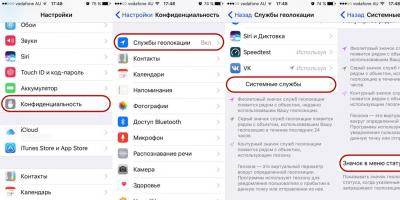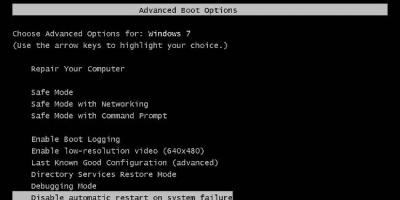Access Options
There are two ways to exchange data via satellite:
- one-way (one-way), sometimes also called "asymmetric" - when a satellite channel is used to receive data, and available terrestrial channels are used for transmission.
- two-way (two-way), sometimes also called "symmetrical" - when satellite channels are used for both reception and transmission.
Two way satellite Internet
The most widely used VSAT-technologies.
Two-way satellite Internet means receiving data from the satellite and sending it back also via the satellite. This method is of very high quality, as it allows you to achieve high speeds during transmission and sending, but it is quite expensive and requires permission for radio transmitting equipment (however, the provider often takes care of the latter). The high cost of two-way Internet is fully justified due to the much more reliable connection in the first place. Unlike one-way access, two-way satellite Internet does not require any additional resources (other than power, of course).
A feature of "two-way" satellite Internet access is a rather large delay on the communication channel. Until the signal reaches the subscriber to the satellite and from the satellite to the Central satellite communication station, it will take about 250 ms. The same amount is needed for the trip back. Plus, the inevitable delays in signal processing and in order to go "over the Internet". As a result, the ping time on a two-way satellite link is about 600 ms or more. This imposes some specifics on the operation of applications via satellite Internet and is especially sad for avid gamers.
Another feature is that equipment from different manufacturers is practically incompatible with each other. That is, if you have selected one operator working on a certain type of equipment (for example, ViaSat, Hughes, Gilat (SkyEdge), EMS, Shiron, etc.), then you can only go to the operator using the same equipment. An attempt to implement interoperability of equipment from different manufacturers (DVB-RCS standard) was supported by a very small number of companies, and today it is more of a "private" technology than a generally accepted standard.
Equipment for two-way satellite Internet
- Transceiver antenna (significantly differs from "receiving" satellite antennas - primarily by the requirements for manufacturing accuracy, mechanical strength and the ability to withstand the installation of a fairly heavy feed and high-frequency unit, so it is noticeably heavier and more expensive). The most commonly used Ku-band, which requires antennas with a diameter of 1.2 - 1.8 meters (the size is determined by the requirements not only for reception, but also for transmission). In a few years, two-way satellite Internet services are expected to appear in Russia, using the promising Ka-band, where it is possible to use antennas of a smaller diameter.
- High-frequency equipment - a transmitting block BUC (block-up converter) and a receiving block LNB (low-noise block) is installed on the antenna feed. In Russia, the power of the used transmitter (BUC) is limited to 2 watts, otherwise the procedure for obtaining permission becomes much more complicated and expensive. As a rule, BUC and LNB are universal, that is, not tied to a satellite terminal. However, some manufacturers, such as Hughes, use their own BUCs and LNBs that are not compatible with equipment from other manufacturers.
- The satellite terminal is the main device for "two-way" satellite access. Provides reception and transmission of a satellite signal, interaction with the central node of the satellite Internet operator and transmission of traffic to the user's local network. Typically, a 10/100Base-T Ethernet interface is used to connect the user. The terminal can be connected to one computer or a whole the local network, for which access to the Satellite Internet will be provided. At the same time, the settings on the part of the user are minimal and do not differ in any way from any other LAN connection.
One way satellite internet
One-way satellite Internet implies that the user has some existing way to connect to the Internet. As a rule, this is a slow and / or expensive channel (GPRS / EDGE, ADSL connection where Internet access services are poorly developed and speed limited, etc.). Only requests to the Internet are transmitted through this channel. These requests are sent to the node of the operator (provider) of one-way satellite access (used various technologies VPN connections or traffic proxying), and the data received in response to these requests is transmitted to the user via a broadband satellite channel. Since most users get their data mainly from the Internet, this technology allows you to get faster and cheaper traffic than slow and expensive terrestrial connections. The volume of outgoing traffic via the terrestrial channel (and hence the cost of it) becomes quite modest (outgoing / incoming ratio - from about 1/10 when surfing the web, from 1/100 and better when downloading files).
Naturally, using one-way satellite Internet makes sense when the available terrestrial channels are too expensive and/or slow. In the presence of inexpensive and fast "terrestrial" Internet - satellite Internet makes sense as a backup connection option, in case of loss or poor performance of the "terrestrial" one.
Equipment for one-way satellite Internet
- Satellite board (DVB-card) for receiving a signal in the DVB-S or DVB-S2 standard. It can be with a PCI, PCI-E or USB interface, the choice depends on what you prefer to connect to your computer. It's better to use DVB-S2 capable boards as more operators switch to this standard;
- Satellite dish ("Dish"), the same as for receiving satellite TV, as a rule, an antenna with a diameter of 90 cm is sufficient (but check the provider's website for the size specifically for your area).
- An amplifier-converter mounted on the antenna (usually a “universal Ku-band converter” operating with linear polarization, but some providers operate in circular polarization, C-band is also possible - check on the provider's website).
DVB map
DVB-card (PCI) TT-budget S-1401
The core of the satellite Internet. Carries out the processing of data received from the satellite, and the selection of useful information. There are many different types of cards, but the SkyStar family of cards is the most famous. The main difference between DVB-cards today is the maximum data rate. Also, the characteristics include the possibility of hardware signal decoding, software support for the product.
Antenna
There are two types of satellite dishes:
- offset;
- direct focus.
Direct-focus antennas are a "saucer" with a section in the form of a circle; the receiver is located directly opposite its center. They are more difficult than offset ones to set up and require climbing to the angle of the satellite, which is why they can “collect” atmospheric precipitation. Offset antennas, due to the shift in the focus of the “dish” (the point of maximum signal), are installed almost vertically, and therefore easier to maintain. The antenna diameter is selected in accordance with the weather conditions and the signal level of the desired satellite.
Converter (LNB)
The converter acts as a primary converter that converts the microwave signal from the satellite into an intermediate frequency signal. Currently, most converters are adapted to long-term exposure to moisture and UV rays. When choosing a converter, you should mainly pay attention to the noise figure. For normal operation, it is worth choosing converters with a value of this parameter in the range of 0.25 - 0.30.
Software
There are two complementary approaches to implementing satellite Internet software.
- In the first case, the DVB-card is used as a standard network device (but working only for receiving), and a VPN tunnel is used for transmission (many providers use PPTP ("Windows VPN"), or OpenVPN at the client's choice, in some cases IPIP- tunnel), there are other options. This disables packet header control in the system. The request packet goes to the tunnel interface, and the response comes from the satellite (if you do not disable header control, the system will consider the packet to be erroneous (in the case of Windows, it is not)). This approach allows you to use any application, but has a large delay. Most satellite providers available in the CIS (SpaceGate (Itelsat), Raduga-Internet, SpectrumSat) support this method.
- The second option (sometimes used in conjunction with the first): the use of special client software, which, due to the knowledge of the protocol structure, allows you to speed up the receipt of data (for example, a web page is requested, the provider's server views it and immediately, without waiting for the request, sends pictures from this pages, believing that the client will still request them; the client side caches such responses and returns them immediately). Such software from the client side, it usually works as an HTTP and Socks proxy. Examples: Globax (SpaceGate + others on request), Sprint (Raduga), Slonax (SatGate, ioSat).
In both cases, it is possible to “share” traffic over the network (in the first case, sometimes you can even have several different satellite provider subscriptions and share the dish due to the special configuration of the machine with the dish (requires Linux or FreeBSD, third-party software is required for Windows)).
Some providers (SkyDSL) necessarily use their software (acting as both a tunnel and a proxy), which often also performs client shaping and does not allow sharing satellite Internet between users (also does not allow using anything other than Windows as an OS) .
Advantages and disadvantages
The following advantages of satellite Internet can be distinguished:
- the cost of traffic during off-peak hours
- independence from landlines (when using GPRS or Wi-Fi as a request channel)
- high final speed (reception)
- the ability to watch satellite TV and "fishing from a satellite"
- free choice of provider
- when working through some operators, you will have a non-Russian IP address (SpaceGate - Ukrainian, SkyDSL - German), as a result of which commercial services that filter the IP addresses of historically insolvent countries and countries with a bad reputation (credit card theft, cyber fraud, hacking and etc.), which include Russia, will work correctly even without a proxy. Mostly characteristic of the porn industry and e-commerce. There may be reverse difficulties with services focused on a specific country (for example, access is allowed only from the Russian Federation).
Flaws:
- the need to purchase special equipment
- complexity of installation and configuration
- generally lower reliability compared to terrestrial connection (more components needed for smooth operation)
- the presence of restrictions (line of sight of the satellite) on the installation of the antenna
- high ping (delay between sending a request and receiving a response). In some situations, this is critical. For example, when working in Secure Shell and X11 interactive mode, as well as in many multiplayer online systems (the same SecondLife cannot work at all via satellite, Counter Strike, Call of Duty shooter - works with problems, etc.)
- if there are at least pseudo-unlimited tariff plans (like “2000 rubles for 40 Gb at 512 kbps further - anlim but 32 kbps” - Active-Mega TP, ER-Telecom, Omsk), terrestrial Internet is already becoming cheaper. With the further development of the cable infrastructure, the cost of terrestrial traffic will tend to zero, while the cost of satellite traffic is strictly limited by the cost of launching a satellite and there are no plans to reduce it.
Links
- Information and articles about satellite Internet, equipment for it and providers.
- Obtaining permission to use the equipment of the two-way satellite Internet system
- Instructions for network settings, basic, satellite Internet providers
- Instructions for setting up an antenna for a satellite on your own.
- How to set up satellite internet using Tuner4PC for SpaceGate provider?
| Internet access (data transfer technologies) | |
|---|---|
| Wired | xDSL DOCSIS Ethernet FTTx PON Dial-up access ISDN Line communication |
| Wireless | Wi-Fi iBurst DECT WiBro /WiMAX UMTS-TDD HSPA EV-DO Satellite LTE Wireless USB GPRS EDGE WiGig |
| Fixed (wired) | |
|---|---|
The level of Internet equipment in Russia reaches high levels, but huge sections of our country still do not have access to the World Wide Web. There is not enough infrastructure, but satellite Internet can solve the problem of its deficiency. It has a number of advantages over the "cable" and mobile communications, is becoming more and more affordable, and the equipment that provides access to it has only become cheaper and easier to install over the years.
What is satellite internet
Today, access to the Internet is possible through a satellite (satellite), the signal from which goes directly to the user's computer connected to the "dish". This access method, however, should not be identified with a wired connection to the provider, which itself takes data from the satellite - in this case, the main channel is leased, which has incomparably more powerful traffic than when using the "dish". Satellites, as a rule, are located on (less often - on medium and low).
Access to the World Wide Web from a “dish” is, as a rule, comparable in its speed characteristics to broadband lines and significantly exceeds 3G and GPRS connection methods. What the last two types of satellite Internet connection have in common is the technology-driven limitation in the amount of traffic. However, with such tasks as reading letters, sending documents, working with online banking, the “plate” copes well. It is indispensable outside the city - where there is no connection from cellular operators or its quality is not enough. Modern equipment for communication with satellites is becoming more and more easy to use, the average user does not experience problems with how to connect satellite Internet on their own.
History of satellite internet
The first experiments with Internet access via satellite began in the early 1990s. Various technologies were offered to the market, but in the end, access to the World Wide Web via geostationary satellites was chosen - the same class that is used for telephone and television communications. Gradually cheaper and smaller in size, terrestrial satellite networks ceased to be an expensive prerogative of the state, they began to be used by business.

As a result, the term "VSAT" (very small aperture terminal) arose, denoting a compact and mobile device on signal reception. With the improvement and further reduction in the cost of technologies, VSAT modules became available not only to businesses, but also to ordinary users, and even "home" antennas appeared - the same "dishes" on the windows, and satellite Internet, reviews of which began to be printed on the pages of the press about technologies.
Asymmetric access
Asymmetric access is one of the two main formats for using satellite Internet. It involves connecting to the World Wide Web through two channels that are different in speed and technology, and the “dish” can be only one of them. The second is, as a rule, a terrestrial connection (sometimes with a much lower one). 1 MB.

Incoming traffic, thanks to the satellite, is served at a very high speed. As a rule, from the same satellite, if you have configured equipment, you can also receive a television signal (some providers include both television and satellite Internet - Tricolor, for example) in the service package. The main drawback is the presence of a terrestrial channel, which simply may not be available. The outgoing speed depends on what type this connection will be. It may not be high enough to perform a number of tasks - sending large files, communicating via video calls.
Symmetric Access
There is also symmetrical ("two-way") satellite Internet. Reviews from users about it are the most positive. As part of it, the communication set is equipped not only with a receiving antenna, but also with a device (subscriber station) capable of transmitting a signal to a satellite. It has all the same advantages as the asymmetric version, but it does not have the disadvantages associated with the second channel. True, the speed of outgoing traffic, as a rule, is lower than that of incoming traffic (the subscriber station is not always powerful enough), but it is enough to comfortably use the basic Internet services.

Among the more significant drawbacks is a very high price, several times higher than that of sets with asymmetric access. But there is also an indisputable advantage: you can access the Internet from virtually anywhere on the planet. Fans of round-the-world expeditions sometimes have no alternatives but to connect satellite Internet with symmetrical access.
Satellite internet speed
As a rule, there are no standard speed indicators guaranteed by the satellite Internet provider - but the user has the right to expect "incoming" traffic at the level of 5-10 megabits / sec. One way or another, it all depends on the degree of congestion of the channel. At the same time, it is interesting that with a satellite connection, the download speed of different objects is “summed up”. For example, if a user simultaneously downloads 100 pictures, each of which has a volume of 1 MB, then he will spend the same amount of time as if he were downloading one "megabyte" picture. Unbelievable, but such is satellite Internet. By the way, providers' tariffs do not take into account this feature and are always charged upon the fact of downloaded data. However, this interesting property also depends on bandwidth ground line, since the satellite will require a response from the computer for each of the received pictures: if this does not follow, then the image will not be transmitted. If the equipment supports two-way access, then the speed of satellite Internet on the outgoing channel, as a rule, is comparable to the indicated figures and can reach values of 8 megabits / sec.

Market overview in Russia
Experts note that asymmetric Internet access via satellite has not received proper distribution in Russia. There are a number of reasons for this: firstly, the providers lack the necessary technological infrastructure, secondly, the difficulty of connecting devices, and thirdly, the underdevelopment of the very second in the country. At the same time, the market for two-way satellite access is growing very actively in Russia (although its figures, in comparison with those of the wired Internet, are still small).
There are forecasts that by the end of 2016 the number of Russian users will grow to 35 thousand people. In many ways, this trend is associated with cheaper equipment that requires satellite Internet. Feedback from consumers of this service allows many market experts to be optimistic about the development of the segment. Leading providers of this technology see owners of private houses in suburban settlements as their main target audience.
Why is satellite better than cable?
We have already spoken about the advantages associated with geographical coverage. We only note that, according to a number of experts, in many Russian regions, including those located in the European part of the country, there are problems with competing solutions - 3G, fiber optics.
The most important advantage of satellite communications is the cheaper infrastructure that may be needed to distribute channel resources to other users. Satellite Internet is able to "diversify" access to the World Wide Web, and this property is indispensable, first of all, for businesses. Including those who work in cities: it often happens that the provider refuses to work, and the ability to receive or send the most important documents on time can be much more important than the cost of installing satellite equipment.

And what, accordingly, is worse
Firstly, purely physically, the antenna only works when it “looks” at the satellite. If, say, the user's office or home is located on the wall opposite the "flight" of the satellite, then communication cannot be established. Secondly, when exchanging data with the participation of a satellite, there is usually a rather large “ping” (signal delay between sending and receiving). This property can bring discomfort, for example, when making audio and video calls, as well as when using entertainment services, for which many people go online: a network of game “polygons” for fans of multiplayer action games can, for example, freeze with a long response. Thirdly, the IP address of the user who "caught" the satellite does not always correspond to the country and city where the connection is established. This may prevent you from working with Internet services that require precise geolocation (for example, search engines, social networks). Fourthly, many experts speak unflatteringly about security - it is not always high when satellite Internet is used. Feedback from experts indicates potential vulnerabilities in terms of intercepting traffic from satellites.
Innovative look
Systems for accessing the World Wide Web through satellites, as mentioned above, are constantly getting cheaper and improved. A few years ago, Russian providers set themselves the task of creating satellite Internet, the tariffs for which would be comparable to those offered by "wire" operators. The government has allocated several billion rubles for these purposes. These funds were used to create projects of innovative communication satellites (in total, four of them are planned to be introduced). It is also assumed that the infrastructure on the ground, which will include a control center and several communication stations with satellites.

The project will be managed by the largest state-owned telecommunications companies. With the help of cheap satellite equipment, the government hopes to create a "people's Internet" accessible throughout Russia. The client audience of such a service is estimated at 2 million subscribers. People, according to experts, need satellite Internet, the prices for which will be below current market rates.
In this article I will try to conduct a comparative analysis of kits for two-way satellite broadband access service or, in simple terms, satellite Internet, in order to try to answer the question: Which satellite Internet to choose?
I’ll make a reservation right away that this comparison is from the point of view of an installer and a private user, and not a technical specialist or an IT specialist. This material will be of interest to private users and small organizations (farmers, shops, small firms, etc.) located in the European part of the Russian Federation. For large companies with a large number of subscribers and huge traffic, completely different offers are provided, which we will not consider in this publication.
Who and how will we compare
To date, there are 3 main players in this field:
- KiteNet (KiteNet).
- Eutelsat Netvorks (Eutelsat Networks), which works for us under the Tricolor brand.
- And, the so-called Ka-Sat (Ka-Sat) from Altegro Sky (AltegroSky), Raduga-Internet and several other operators.
You can also find Hughes Jupiter kits (Hughes JUPITER), but this is already a more expensive solution and it is more relevant for the eastern regions of the country, so we will not consider them in this review.
I will compare the proposals of the above-mentioned review participants according to 6 parameters, based on my own experience and recalling our customers:
- coverage area.
- Equipment set.
- Cost of equipment.
- Installation, configuration and registration.
- Rates and speed. For comparison, let's take 10GB of prepaid traffic.
- Ease of purchase and scope.
It is clear that any of these points can change at any time. For example, one of the operators can reduce the cost of traffic (dreams-dreams), and someone will offer more affordable equipment. So, I will make a reservation that the data below is relevant at the time of writing the review, and this is March 2017.
Overview of satellite internet Ka-Sat
Let's start with Ka-Sata, because. this proposal appeared on the domestic market earlier than the other two.
1. Tricolor Internet coverage area

The service is provided from the Express-AMU1 satellite (Eutelsat 36C) at the position of 36°E. Thanks to this, Tricolor satellite Internet covers the entire European part of Russia, as well as most of Eastern Siberia. In addition, this is the highest hanging satellite for us, and, therefore, the most convenient for reception (especially in the European part of the country).
Here five.
2. A set of equipment Tricolor Internet

The kit is the most compact of all and the most modern of all monitored. The equipment is manufactured by the well-known Israeli company Gilat Satellite Networks. For connection, a set of satellite equipment Gemini-i is used, consisting of:
- Antennas with a diameter of 0.76 m with a mounting and guidance system
- 2 Watt transceiver with built-in audible fine pointing indicator
- satellite modem
Unfortunately, the bracket is not included. In general, a good quality kit, but still slightly inferior to the Ka-Sat.
Four due to the lack of a bracket.
3. The cost of Tricolor Internet equipment
The price for a set on the market is not small - from 24,000 to 27,000 rubles. The highest of all three operators. Someone, perhaps, here will draw an analogy with the Tricolor TV satellite television set, which has never been famous for its attractive cost. Well, what can I say: Tricolor is a brand, and you have to pay for the name.
Because price the cost of the kit is the highest of all, then we will supply top three.
4. Installation, configuration and registration Tricolor Internet
Installation is almost the same as Ka-Sat, but there are several technical aspects that make assembly and installation more complicated. Most likely, you will have to use the services of specialists.
Four.
5. Tariffs and speed of Tricolor Internet
As for the speed of work, Tricolor simply has no competitors here! 40 Mbps receive and 12 Mbps back. To date, no one works faster! Even the newfangled LTE mobile networks are far from being able to offer such speed everywhere.







